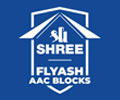Autoclaved Aerated Concrete blocks, popularly known as Flyash AAC blocks, have more advantages than conventional building materials like red clay brick.
Many aspects of the Flyash AAC block make it superior to its counterparts. These might include weight, as we know that these blocks are at least 50% lighter than the red bricks.
The blocks are available in standard sizes and can be easily cut to fit different requirements at construction sites. Aside from that, they are fire resistant and have a remarkable threshold to withstand fire.
But this block can be safely called a thermal block as well. And why is it so?
Flyash AAC block construction – Thermal properties of the blocks
The thermal block is also called the self-insulation block. They have lesser thermal conductivity. This unique masonry mortar was introduced so that it could meet the requirement of energy conservation.
How are Flyash AAC blocks different from other construction materials?
In the context of acting as a thermal block, they are excellent and possess unique heat insulation properties. Not just that, if you stay in a building that has been constructed with autoclaved aerated concrete blocks, you can save energy costs by as much as 30% as it helps in reducing your air-conditioning requirements. The Flyash AAC blocks keep the heat from the strong sunlight from reaching the interiors. This is in sharp contrast to traditional building materials.
Due to their thermal conductivity properties, the buildings remain warm during the colder months and cooler during the summers without causing any adverse effects on the health of the occupants.
If you talk about insulation in a house, it usually denotes how well heat is resisted by your house. This is where certain mathematical calculations come in. Usually, two values are considered, namely, the R-value and the U-value.
While the U value implies how much heat can cross across materials and also measures how well electricity is conducted through the same material, the R-value is not the same and is different. R denotes resistance to the transfer of heat. As such, sometimes you might also come across terms like thermal mass or thermal resistance.
How are the Flyash AAC blocks made?
These blocks are made from natural elements. These include lime, sand, cement, fly ash, gypsum, and aluminum powder. The most important aspect to keep in mind is to mix the ingredients in the appropriate proportion. This is crucial because the accuracy usually determines the many properties of these blocks. Proper preparation, in turn, will decide how well these blocks can conduct and insulate the heat and resist fire, and so on.
One of the biggest manufacturers of Flyash AAC blocks in our country is Shree Flyash. Over the years, they have offered unparalleled products. There has not been a single instance when a client had any issue with the quality of our blocks.
If you want to find out more about how Flyash AAC blocks function as a thermal block, and for in-depth information, you can reach out to https://shreeflyashaacblocks.com/aac-blocks/.

